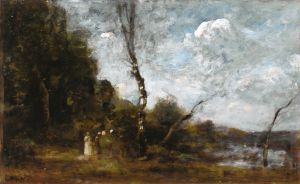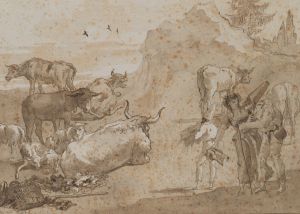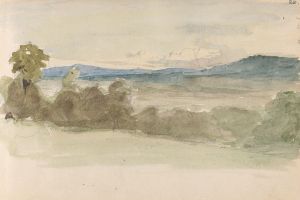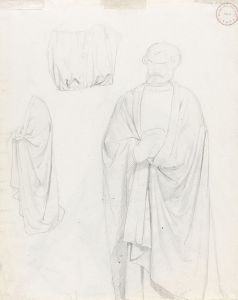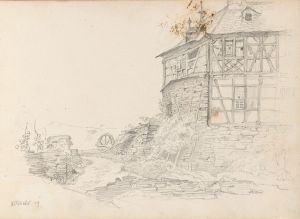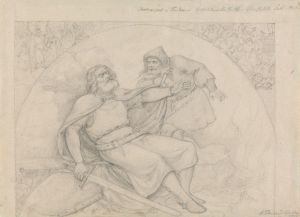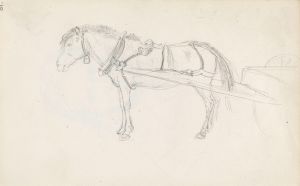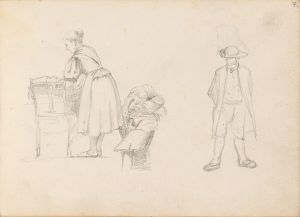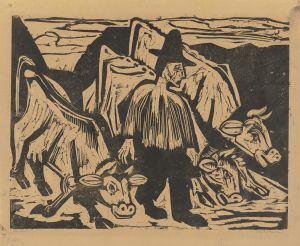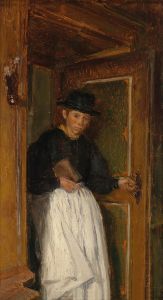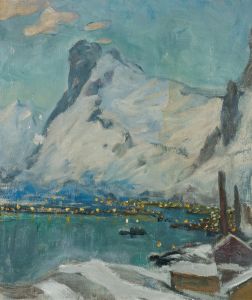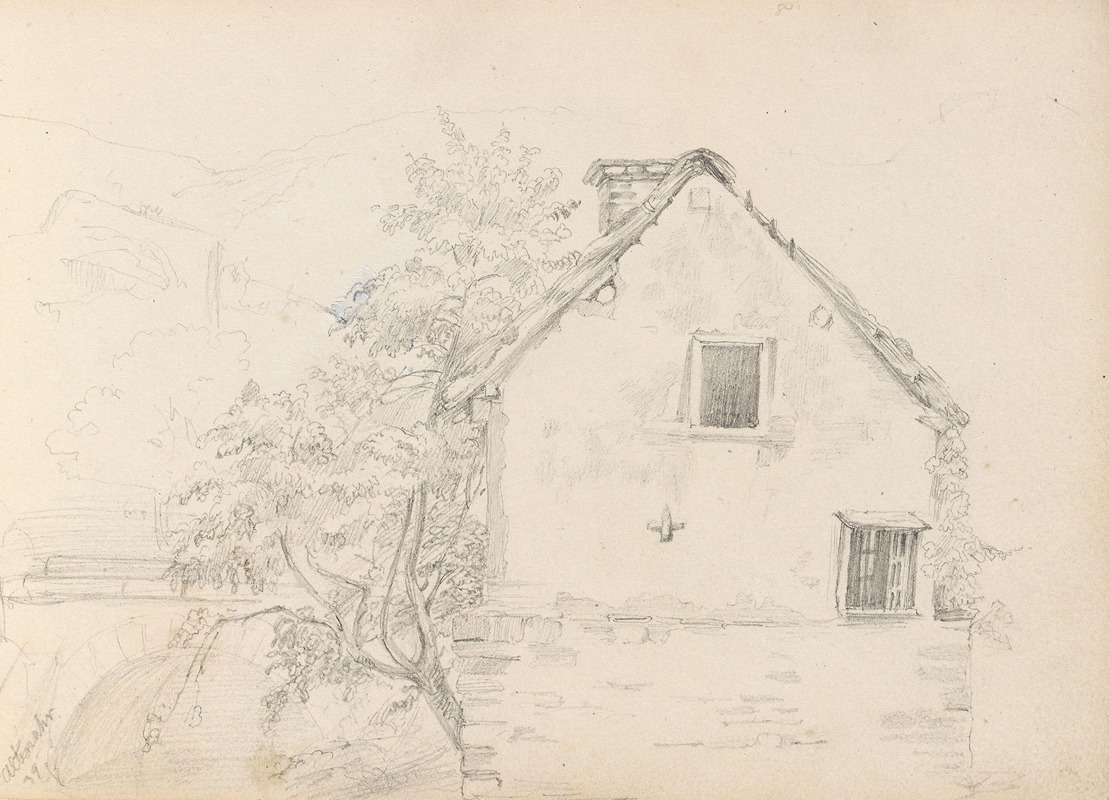
Bondehus, Altenahr
A hand-painted replica of Adolph Tidemand’s masterpiece Bondehus, Altenahr, meticulously crafted by professional artists to capture the true essence of the original. Each piece is created with museum-quality canvas and rare mineral pigments, carefully painted by experienced artists with delicate brushstrokes and rich, layered colors to perfectly recreate the texture of the original artwork. Unlike machine-printed reproductions, this hand-painted version brings the painting to life, infused with the artist’s emotions and skill in every stroke. Whether for personal collection or home decoration, it instantly elevates the artistic atmosphere of any space.
Adolph Tidemand (1814–1876) was a prominent Norwegian romanticist painter, renowned for his detailed and evocative depictions of Norwegian folk life and traditions. One of his notable works is "Bondehus, Altenahr," which translates to "Farmhouse, Altenahr." This painting is a testament to Tidemand's dedication to capturing the essence of rural life and his meticulous attention to detail.
"Bondehus, Altenahr" was created during a period when Tidemand was deeply invested in exploring and documenting the everyday lives of the Norwegian peasantry. His works often reflect a deep respect and admiration for the simplicity and authenticity of rural existence, which was a common theme in the Romantic era, emphasizing a return to nature and the celebration of the common folk.
The painting depicts a traditional farmhouse in Altenahr, a small town located in the Ahr Valley in Germany. Altenahr is known for its picturesque landscapes and historical architecture, which Tidemand skillfully captures in this piece. The farmhouse is portrayed with a high degree of realism, showcasing the rustic charm and sturdy construction typical of rural homes in the region. The attention to architectural details, such as the wooden beams and stone foundations, highlights Tidemand's commitment to authenticity.
Tidemand's use of light and shadow in "Bondehus, Altenahr" adds depth and dimension to the scene, creating a sense of warmth and homeliness. The natural light streaming through the windows and the play of shadows on the walls contribute to the overall atmosphere of tranquility and simplicity. This technique is characteristic of Tidemand's style, where he often employed light to enhance the emotional impact of his scenes.
The painting also reflects Tidemand's interest in the cultural and social aspects of rural life. Although "Bondehus, Altenahr" primarily focuses on the architectural elements of the farmhouse, it implicitly conveys the lifestyle and values of the people who inhabit such spaces. The sturdy construction and well-maintained appearance of the farmhouse suggest a community that values hard work, resilience, and a close connection to the land.
Adolph Tidemand's works, including "Bondehus, Altenahr," played a significant role in the national romantic movement in Norway. By documenting and celebrating the rural way of life, Tidemand contributed to a growing sense of national identity and pride. His paintings served as a visual record of a way of life that was rapidly changing due to industrialization and modernization.
In summary, "Bondehus, Altenahr" by Adolph Tidemand is a remarkable example of the artist's ability to capture the essence of rural life with authenticity and emotional depth. Through his meticulous attention to detail and masterful use of light, Tidemand creates a scene that is both realistic and evocative, celebrating the simplicity and resilience of rural communities. This painting, like many of Tidemand's works, serves as a valuable historical document and a testament to the enduring appeal of the Romantic era's focus on nature and the common folk.






